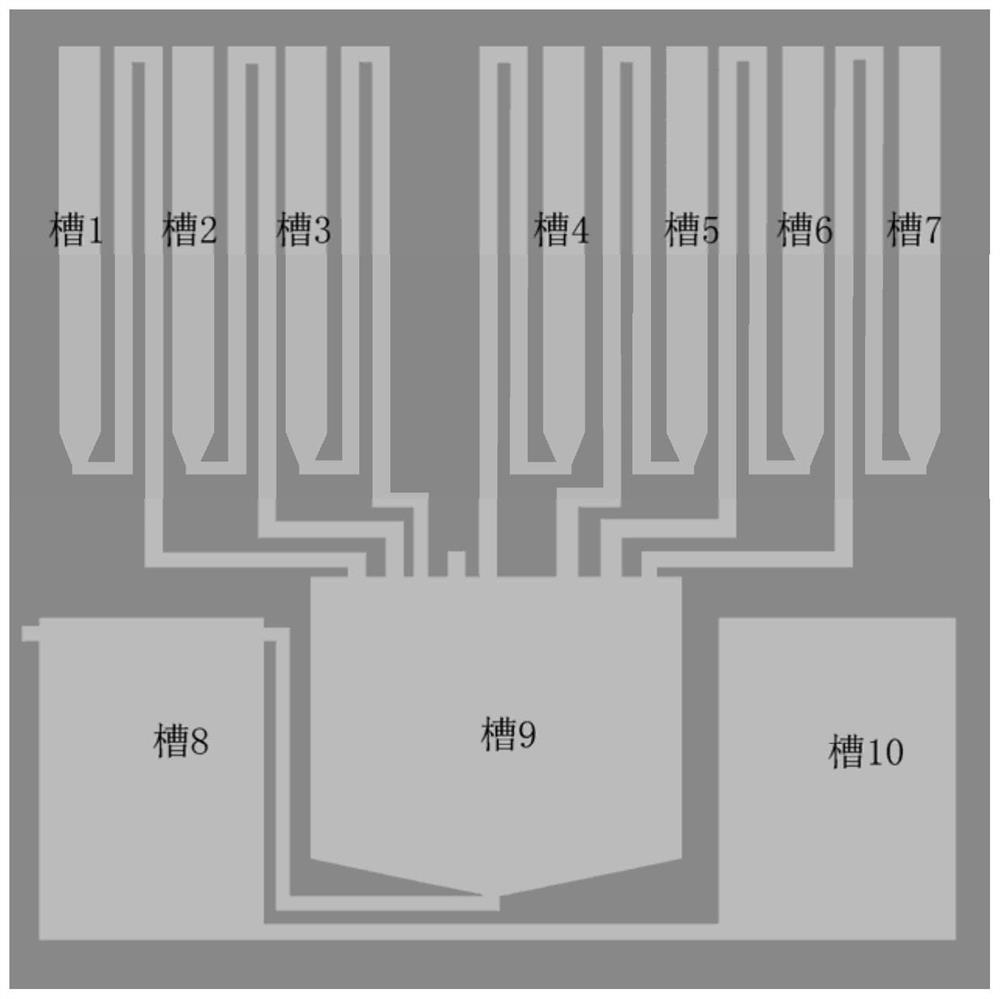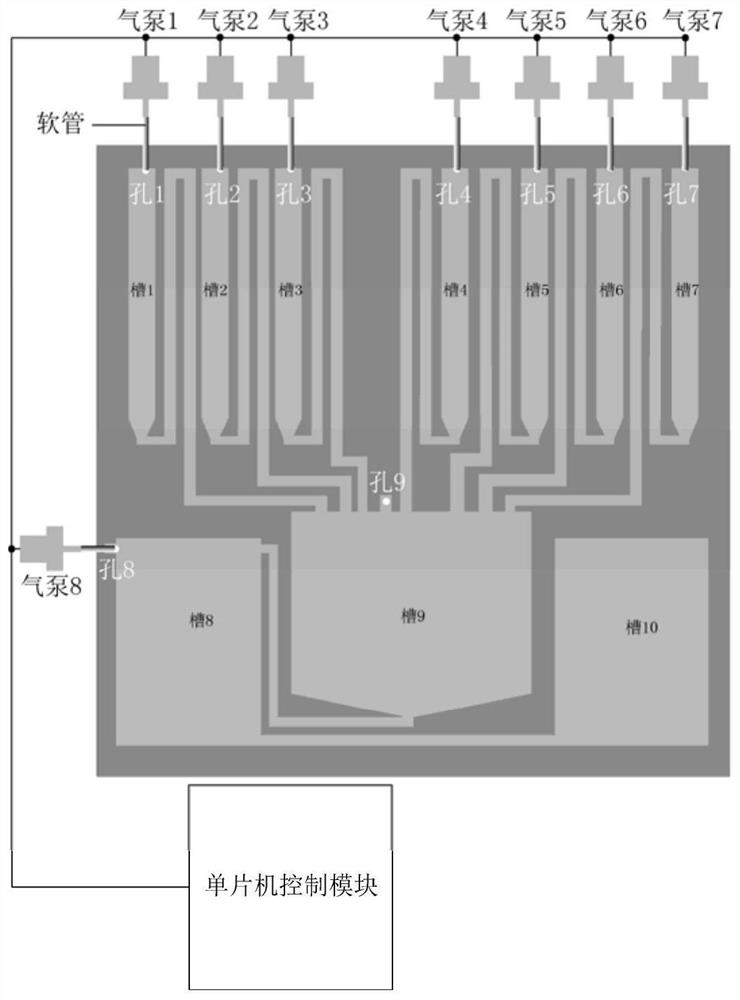Micro-fluidic chip for detecting micro-pollutants
A microfluidic chip and pollutant technology, applied in fluid controllers, laboratory containers, laboratory utensils, etc., can solve the problems of cumbersome and time-consuming detection processes, inability to detect real-time, and inability to carry around, and achieve a simple structure. , low cost, detection effect without interference
- Summary
- Abstract
- Description
- Claims
- Application Information
AI Technical Summary
Problems solved by technology
Method used
Image
Examples
Embodiment Construction
[0012] The specific implementation manner of the present invention will be described in detail below in conjunction with the accompanying drawings and preferred embodiments. like Figure 1-Figure 2 As shown, a microfluidic chip for detecting micro-pollutants uses two acrylic plates to form a sealed groove for storing liquids and mixing reactions. The acrylic plate has good weather resistance, acid and alkali resistance, and long life , Strong impact resistance and many other advantages. Tank 1 is DNA, slot 2 is 30nm gold nanoparticles, slot 3 is 2-naphthol, slot 4 is tris(2-carboxyethyl)phosphine hydrochloride (TCEP), slot 5 is phosphate buffered saline (PBS ), the groove 6 is sodium chloride (NaCl), and the groove 7 is the analyte (such as mercury ion).
[0013] like image 3 As shown, at first, the gold nanoparticles in the tank 2 are blown into the reaction tank by the air pump 2, then the 2-naphthylthiol in the tank 3 is blown into the reaction tank 9 by the air pump 3,...
PUM
 Login to View More
Login to View More Abstract
Description
Claims
Application Information
 Login to View More
Login to View More - R&D
- Intellectual Property
- Life Sciences
- Materials
- Tech Scout
- Unparalleled Data Quality
- Higher Quality Content
- 60% Fewer Hallucinations
Browse by: Latest US Patents, China's latest patents, Technical Efficacy Thesaurus, Application Domain, Technology Topic, Popular Technical Reports.
© 2025 PatSnap. All rights reserved.Legal|Privacy policy|Modern Slavery Act Transparency Statement|Sitemap|About US| Contact US: help@patsnap.com



